
Banner
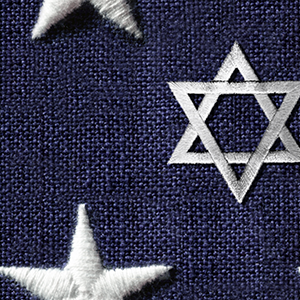
US Jewry’s strong call to action on Pew
Published
9 years agoon
By
adminANT KATZ
Intermarriage has clearly been defined in the new report as the most important issue that needs to be tackled. Nine per cent of secular Jews in the survey had a non-Jewish spouse, and 36 per cent among Jews who practise religion.
The US leadership has now published their strategy to deal with the problems identified in the report.
In a new analysis marking the second anniversary of the release of the 2013 Pew Research Centre’s “Portrait of Jewish Americans”, the website eJewishPhilanthropy.com says quite emphatically: “American Jewry now stands at a crossroads. Our choices are stark: we either accept as inevitable the declining numbers of engaged Jews, or we work to expand the community and improve the quality of Jewish life going forward.”
The call to action is co-signed by a group of US Jewish leaders who are deeply concerned at the shocking predictions which were the result of analysis of the 2013 Pew poll. But, say the signatories, there is still time to remedy the situation if US Jewry acts quickly and decisively.
eJewishPhilanthropy.com posted “Strategic Directions for Jewish Life: A Call to Action” on October 1. The website points out that the 2013 poll advocated strategic responses to the challenges to the Jewish future.
Despite the evidence of deeply disturbing population trends, the community is bereft of any sense of crisis, says the report.
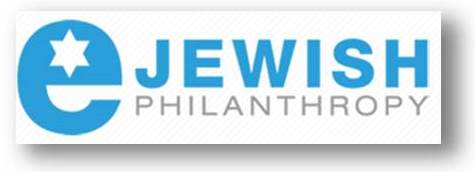 This posture, says eJewishPhilanthropy.com, “stands in stark contrast to what happened in the 1990s when communal organisations acknowledged a Jewish continuity crisis and created elaborate task forces and special programmes to address it. These include effective programmes, such as Birthright Israel and leadership training efforts. Today’s near-inaction bespeaks a self-imposed helplessness. The time (is now) to mobilise the Jewish community to adopt effective policies and programmes.”
This posture, says eJewishPhilanthropy.com, “stands in stark contrast to what happened in the 1990s when communal organisations acknowledged a Jewish continuity crisis and created elaborate task forces and special programmes to address it. These include effective programmes, such as Birthright Israel and leadership training efforts. Today’s near-inaction bespeaks a self-imposed helplessness. The time (is now) to mobilise the Jewish community to adopt effective policies and programmes.”
Jewish Report Online carried an extensive report (CLICK HERE: PORTRAIT OF JEWISH AMERICANS) on October 7, 2013 which included many details of the original report as well as graphs, statistics, PDFs and links back to the original Pew document. “Massive new (and maybe the biggest ever) study by respected US pollsters Pew, shows that 22 per cent self-identify as having no religion and 60 per cent who have married since 2000 chose non-Jewish spouses,” was the way we introduced the article.
eJewishPhilanthropy.com refers to the “Challenging Context” for US Jewry that emerged from Pew’s “Portrait of Jewish Americans”:
- Late marriage and non-marriage: most (51 per cent) non-Orthodox Jews aged 25 – 39 are not married, and of those aged 40 – 49, fully 18 per cent have never married.
- Frequent intermarriage: Of those raised Reform – to take one example – 80 per cent of those who married between 2000 and 2013 have non-Jewish spouses.
- Low birth rates: Non-Orthodox Jewish women bear on average just 1,7 children, below the 2,1 replacement level; and owing to intermarriage, many of those children will identify as non-Jews when they grow up.
- The disaffiliation of two million Jews: Of the 7,2 million adult Americans who have at least one Jewish parent, 5,1 million identify as Jews and the other 2,1 million do not.
- Overall, we find diminished Jewish social connections, a weaker sense of meaningful and compelling Judaism, and fewer engaged Jews, outside the Orthodox sector. Down the line, we face the prospect of a community consisting of many ultra-Orthodox Jews, on the one hand, and “partly Jewish” Jews, as they call themselves, on the other.
Strategic ideas
In light of these deeply unsettling trends, the signatories to the eJewishPhilanthropy.com anniversary article call for “a communal mobilisation campaign aimed at policy-makers and philanthropists”. These, they say, should convey two main messages:
- The decline of the Jewish “Middle” must be recognised: We are seeing severe declines in the “Jewish Middle” – Jewishly engaged individuals and communities outside of Haredi Orthodoxy.
- Effective responses are feasible: We can significantly influence the size, character, commitment and Judaic capacity of this Jewish Middle.
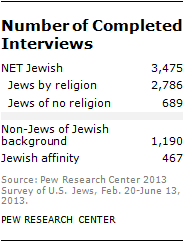 In other words, says the report, if current trends continue unchecked, the American Jewish community will grow smaller and less vital.
In other words, says the report, if current trends continue unchecked, the American Jewish community will grow smaller and less vital.
There is something that
can be done about it
The signatories to the anniversary article say that research demonstrates several communal endeavours that can counteract the alarming trends. The most effective, they suggest, share three critical features:
- They build Jewish social networks.
- They convey Jewish content.
- They target peer groups of Jews at crucial stages of life.
The group of signatories say the “most promising approach focuses on adolescent Jewish education… day schools, supplementary schools, overnight Jewish camps, Israel trips, and youth groups. These experiences, taking place in the crucial identity-forming high school years, work in synergy. They support one another, and recruit for one another.”
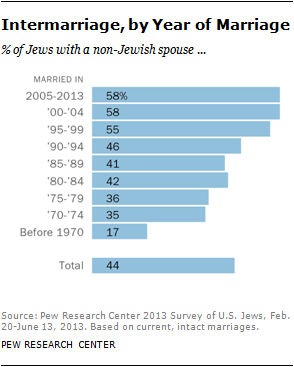 They suggest the following actions that can be taken to expand participation in each of these settings:
They suggest the following actions that can be taken to expand participation in each of these settings:
- Several states have adopted tax policies that offset day school tuition. The Jewish community should support such efforts and find other ways to make day schools more affordable.
- While supplementary schools (usually congregationally sponsored) exert a limited impact in the pre-bar/batmitzvah years – there are important exceptions. Supplementary schooling lasting seven or more years (well into the teen years) produces measurable, lasting effects, independent of other educational experiences. In fact, one value of supplementary schooling is that it serves as a critical recruiting ground for camps, Israel trips, and youth groups. The combination of supplementary education with these other adolescent programmes enhances the chances of securing Jewish continuity.
- Jewish summer camp enrolment is now bumping up against capacity and camp costs strain many family budgets. Yet, $1 million is sufficient to initiate an overnight camp on rented property that would serve 500 campers per summer on a self-supporting and sustainable basis.
- We have expanded Israel travel via Birthright. Why not provide the same support for Israel trips for teenagers, especially in light of recent research demonstrating the effectiveness of such trips, and the challenges that these teenagers will soon face on the college campus?
- Two well-funded youth groups (NCSY and BBYO) have enjoyed considerable success. What about extending philanthropic support to other major youth groups so that the vast pool of Jewish teens can be identified and organised?
- Congregations – and specifically their rabbis, educators, and youth professionals – play a critical role in recruiting and sustaining teenagers’ participation in all these educational experiences, to say nothing of the fact that they already provide a minority with opportunities for prayer, learning, service, and social experiences. Congregational leaders should give greater attention to, and raise the priority and quality of, adolescent Jewish education.
They encourage post-high schoolers to become involved in Jewish campus activities. “Beyond the campus, the largely single, urban, young adult population displays little interest in affiliating with synagogues and other mainstream Jewish institutions,” they note. However, some do participate in less conventional Jewish learning experiences such as Limmud.
The signatories are targeted at raising affiliation and increasing the in-marriage rate.
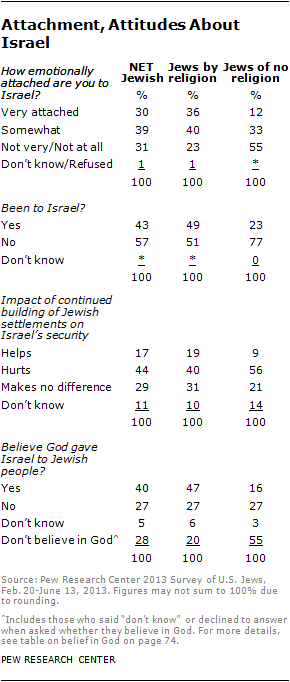 Moving forward, they say, community needs “to advance on multiple fronts in the coming years”.
Moving forward, they say, community needs “to advance on multiple fronts in the coming years”.
Signatories
We believe these steps are not only urgently necessary for a healthier Jewish future, but are also achievable in our time.
The institutional affiliation is for identification purposes only. Signatories are signing in a strictly personal capacity.
- Rabbi B Elka Abrahamson, president, The Wexner Foundation
- Karen Adler, board member, several national Jewish organisations, New York
- Mimi Alperin, vice-chairman, Board of Trustees, Jewish Theological Seminary
- Rabbi Sharon Cohen Anisfeld, dean, Rabbinical School of Hebrew College, Boston, MA
- Dr Steven Bayme, visiting faculty, Yeshivat Chovevei Torah
- Mem Bernstein, chairman, AVI CHAI Foundation
- Rabbi Peter S Berg, senior rabbi, The Temple, Atlanta, Georgia
- Mijal Bitton, doctoral candidate, NYU & Wexner Graduate Fellow
- Dan Brown, founder, eJewish Philanthropy
- Dr Erica Brown, author and educator, Washington, DC
- Rabbi Sharon Brous, founding rabbi, IKAR, Los Angeles, California
- Rabbi Scott Bolton, Congregation Or Zarua, NYC
- Dr David Bryfman, chief innovation officer, Jewish Education Project
- Rabbi Angela Warnick Buchdahl, senior rabbi, Central Synagogue, New York
- Prof Steven M Cohen, Hebrew Union College-Jewish Institute of Religion
- Rabbi Elliot Cosgrove, rabbi, Park Avenue Synagogue
- Rabbi Rachel Cowan, New York
- Rabbi Eric Cytryn, rabbi, Beth El Temple, Harrisburg, Pennsylvania
- Barbara Dobkin, past chaiman, American Jewish World Service
- Rabbi Stephen J Einstein, founding rabbi emeritus, Cong. B’nai Tzedek, Fountain Valley, CA
- Rabbi Ed Feinstein, rabbi, Valley Beth Shalom, Encino, California
- Prof Sylvia Barack Fishman, Joseph and Esther Foster Professor of Contemporary Jewish Life, Brandeis University
- Rabbi David Frank, rabbi, Temple Solel, Cardiff, California
- Michelle Friedman MD, chairman of Pastoral Counselling, YCT Rabbinical School
- Rabbi Laura Geller, senior rabbi, Temple Emanuel of Beverly Hills, California
- Rabbi William G Gershon, rabbi, Congregation Shearith Israel, Dallas, Texas
- Rabbi Arnie Gluck, rabbi, Temple Beth-El, Hillsborough, New Jersey
- Rabbi Neal Gold, rabbi, Temple Shir Tikva, Wayland, Massachusetts
- Prof Lisa Grant, Hebrew Union College-Jewish Institute of Religion
- Harold Grinspoon, Grinspoon Foundation, Springfield, Massachusetts
- Rabbi Irving (Yitz) Greenberg, founding president, Jewish Life Network, Steinhardt Foundation
- Prof Harriet Hartman, editor-in-chief, Contemporary Jewry; professor of sociology, Rowan University
- Prof Samuel C Heilman, Harold Proshansky chairman in Jewish Studies, CUNY Graduate Centre and distinguished professor of sociology, Queens College
- Roger Hertog, Hertog Foundation
- Rabbi David Hoffman, vice-chancellor and chief advancement officer, Jewish Theological Seminary
- Rabbi Sarit Horwitz, BJ Rabbinic Fellow, Cong B’nai Jeshurun, NY & Wexner Grad. Fellow
- Rabbi Howard Jaffe, rabbi, Temple Isaiah, Lexington, Massachusetts
- Rabbi Jeremy Kalmanofsky, rabbi, Congregation Ansche Chesed, New York
- Rabbi Elana Kanter, The Women’s Jewish Learning Centre, Phoenix, Arizona
- Aliza Kline, founding executive director, OneTable
- Lynn Korda Kroll, New York
- Rabbi Noa Kushner, The Kitchen, San Francisco, California
- Rabbi Steve Kushner, rabbi, Temple Ner Tamid, Bloomfield, New Jersey
- Robert I Lappin, president, Lappin Foundation, Salem, Massachusetts
- Rabbi Marion Lev-Cohen, Central Synagogue, New York
- Dr Adriane Leveen, Hebrew Union College-Jewish Institute of Religion
- Prof Jon Levisohn, Jack, Joseph & Morton Mandel chairman in Jewish educational thought, Brandeis University
- Rabbi Cliff Librach, senior rabbi, United Jewish Cenre, Danbury, Connecticut
- Prof Deborah Lipstadt, Dorot Professor of Modern Jewish and Holocaust Studies, Emory University, Atlanta, Georgia
- Rabbi Bennett Miller, rabbi, Anshe Emeth Memorial Temple, New Brunswick, New Jersey
- Rabbi Leon Morris, vice president for programmes in Israel, Shalom Hartman Institute
- Rabbi Danny Nevins, Pearl Resnick dean of The Rabbinical School, JTS
- Letty Cottin Pogrebin, author and activist
- Prof Riv-Ellen Prell, prof of American studies and director, Centre for Jewish Studies, University of Minnesota
- Rabbi Richard S Rheins, senior rabbi, Temple Sinai, Denver, Colorado
- Rabbi Peter Rubinstein, director of Jewish community and Bronfman Centre for Jewish Life, 92nd Street Y
- Rabbi Jeffrey K Salkin, senior rabbi, Temple Solel, Hollywood, Florida
- Prof Jonathan D Sarna, Joseph H & Belle R Braun Professor of American Jewish History, Brandeis University.
- Rabbi Julie Schonfeld, executive vice president, Rabbinical Assembly
- Dr Bernard Shapiro, principal emeritus, McGill University, Montreal, Canada
- Michelle Shain, PhD candidate, Heller School for Social Policy & Management, Brandeis University
- Rabbi Michael Siegel, Norman Asher Rabbinic Chaiman, The Anshe Emet Synagogue, Chicago
- Rabbi Alan Silverstein, rabbi, Congregation Agudath Israel, Caldwell, New Jersey
- Rabbi Gerald Skolnik,r Rabbi, Forest Hills Jewish Centre
- Dr Erin Leib Smokler, director of spiritual development, Yeshivat Maharat
- Rabbi Daniel Smokler, chief innovationoOfficer, Hillel International
- Jonathan S Tobin, senior online editor, Commentary Magazine
- Diane Troderman, past chairman of JESNA (Jewish Education Service of North America)
- Rabbi Steven C Wernick, chief executive officer, United Synagogue of Conservative Judaism
- Prof Jack Wertheimer, professor of American Jewish history, Jewish Theological Seminary
- Rabbi Ethan Witkovsky, rabbi, Park Avenue Synagogue, New York
- Rabbi David Wolpe, rabbi, Sinai Temple, Los Angeles, California
- Rabbi Irwin Zeplowitz, rabbi, The Community Synagogue, Port Washington, New York
- Rabbi Sheldon Zimmerman, rabbi, The Jewish Centre of the Hamptons, East Hampton, NY
Related Reads – download these PDFs
The following documents have been uploaded in PDF format for the convenience of users and can be downloaded from the website and forwarded to friends or family members – or printed to be read later:
- THE FULL PEW REPORT
- OVERVIEW OF THE PEW REPORT
- THE PEW REPORT QUESTIONNAIRE
- THE SUPPLEMENTAL SURVEYS
- TOP-LINE PEW SURVEY RESULTS




